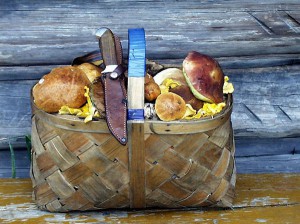 First a bit of history. On the healing properties of many plants, people know a long time ago. And, in fact, from the experience of using herbs, berries, leaves, roots and even the bark of trees and there has occurred modern pharmacology - the science of therapeutic action of various substances on the human body. But the centuries-old practitioner of traditional medicine showed that not only green plants, but also such peculiar organisms as mushrooms help to fight.
First a bit of history. On the healing properties of many plants, people know a long time ago. And, in fact, from the experience of using herbs, berries, leaves, roots and even the bark of trees and there has occurred modern pharmacology - the science of therapeutic action of various substances on the human body. But the centuries-old practitioner of traditional medicine showed that not only green plants, but also such peculiar organisms as mushrooms help to fight.
Yet ancient Roman scientist Dioscride in the first century of our era, i.e. almost 2000 years ago, described medical properties Larch drum, and in particular its ability to help with gastrointestinal diseases. And at the end of the XIX century, this mushroom was used in Russia as a medicine against tuberculosis and as a bloodstand. Long he was the subject of traditional exports. Up to 8 tons of dry larch drums exported annually from Russia abroad.
From the vintage book-herbalists, it is known that in folk medicine, mushroom preparations in the form of powders were especially widely used in Japan, China, Tibet. "Birch mushroom", or Chaga, treated Vladimir Monomakh, who, as doctors, who studied the chronicle description of his illness, was a lip cancer. True, what is the end of this treatment, the chronicles are silent.
In medieval Europe, fresh juice was treated with eye disease. In antique hospitals it is indicated that the Mushroom "Judino Ear" (Auriku-Laryia Underwind), occurring in the Caucasus and the Far East, helps in certain diseases of the throat.
Went time and ethnoscience An experimental way was taken by mushrooms, which are now applied to therapeutic purposes. Here, for example, messel ordinary, or * smelly curls, "close relative of ordinary raincoats. . Wester in deciduous and especially often in wide forests on the soils rich in humus, more often under the bushes of nuts. It is possible to find it summer and v beginning autumn.
In young age mushroom It has the form of an egg size with chicken, and even larger, dressed in white or yellowish sheath. In Germany, it is called it - • damn egg. " If the egg is cut, then under a dense leathery, you will see a pupilty thick second sheath and greenish-olive conciseness of the fruit body of the fungus. This inner cloak, called "earth oil", is used in the form of ointments in the treatment of rheumative and gout (in modern - dystrophic polyarthritis). When ripening the mushroom, both shells break up and grows the hollow spongy cream leg with a folded on-shoe-visible cap coated with a layer of greenish bulk mucus containing disputes. Then the mushroom makes a strong unpleasant smell of fell, attracting flies, which and spread his disputes. The tincture of the dried fruit bodies of the ammunition contributes to the rapid healing of the Russian Academy of Sciences.
In the Urals under the same name "Earth Oil" to the present, in the treatment of rheumatism, a sarco-th round, close to curl mushrooms, is used. It appears in the spring and early summer in coniferous and mixed forests and has the form of large brown bowls with a diameter of 5-10 cm, filled with a shapeless mass, which is used as ointment.
And now remember the most popular mushroom with us - white. It has always been believed that systematic eating white mushroom prevents the development of certain gastrointestinal diseases. Indeed, not so long ago in the white mushroom were found substances that suppress the development of pathogenic for human intestinal bacteria. Or such an interesting fact. Bohemian Germans are attributed to a white mushroom ability to warn cancer diseases. According to researchers, cases of cancer in the forest areas of Bohemia are extremely rare. And the first positive results were also obtained in experiments on the action of a white mushroom on the development of malignant tumors in animal experiments. At the same time, it turned out that the depressing effect on malignant tumors is especially expressed in a fir form, that is, mushrooms growing in symbiosis with fir. They are characterized by a large brown-brown hat.
In a number of countries there are persistent folk ideas about preventive antitumor and other therapeutic properties of some fungi—trutovikov, hay mushrooms, curl, raincoats. Probably, therefore, in recent years, macromitza mushrooms, i.e., with large, visible naked eye fruit bodies, are increasingly becoming objects of the study of medical scientists. Recall that in the nature of the metabolism of mushrooms occupy an intermediate position
between animals and plants, and we have the right to expect the detection of such substances in them, which neither plants or animals cannot form. And these expectations are already justified. For example, it turned out that the mushrooms of the mucous membrane (money) - it grows on a beech or oak - forms an antibiotic substance Muzzidin, an overwhelming growth of microscopic molds. Now in many countries based on this substance, a drug is produced under the name "Muzidermin", which is used in the treatment of human fungal diseases.
Io will return to well-familiar edible mushrooms. So, golden - or lemon-yellow larch oil in folk medicine is used for gout. It is also considered that he is able to shoot or alleviate sharp headaches. This butterfly grows from June to November in the zone of the root system of larch. In one place, it can be collected dozens of years. But if the tree dies, the larch oil and lacrimal disappear.
Another popular edible mushroom is an ordinary grive, or delicate. Purple pigment - Laccarovyolin, determining the color of the mushroom, has an antibiotic effect. It significantly delays the growth of tuberculous sticks. In addition, this substance in its chemical nature refers to the group of azulenes, a number of which have a healing effect in diseases caused by a disorder of metabolic disorders, for example, at spottedness of the skin (VTU-Ligo).
It is also known that some mushrooms MileciaWhere and the Ryzhik belongs, make it easier, the course of rheumatism.
In Autumn mushroom Zelenushka There was a substance from a group of anticoagulants that prevent blood coagulation. Autumn Opels in folk medicine are used as a light laxative.
In recent years, Shiitaka or Lentinus, and winter mushrooms, or flamesulina velvety, who are widely cultivated in a number of countries have been particularly widely known.
Shiitake, or black forest mushroom, in vivo is found in Japan. This mushroom reduces cholesterol levels in the blood and thus slows down the development of atherosclerosis. Japanese scientists have allocated an ethitadenine substance from it, which is responsible for cholesterol levels. The mushroom is also effective at elevated arterial pressure, and quite recently there have been information about its antitumor, antiviral and anti-aid action. Hence the great popularity of Shiitake as a food in Japan.

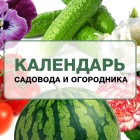




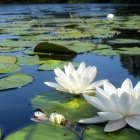
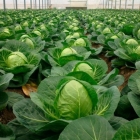
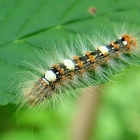


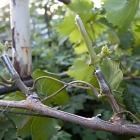

 Start a discussion ...
Start a discussion ...